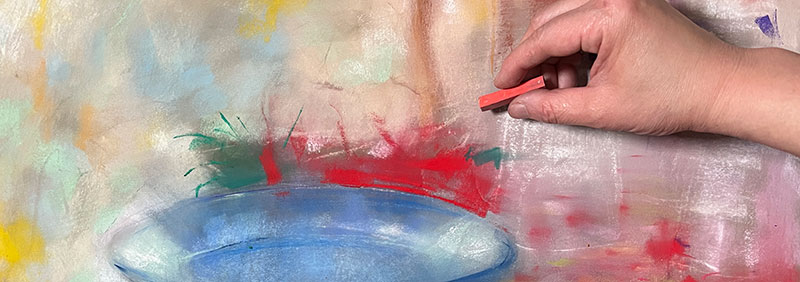This video is part 2 in a Drawing Curriculum designed for self-taught artists. (Watch Part 1 & Part 3) This video is an overview of the broad range of stylistic ways you can draw.
This includes line drawings, tonal drawings, cross-hatched drawings, and more, using examples from art history and contemporary art.

Discussion led by Art Prof Clara Lieu and Teaching Artist Lauryn Welch.

Video Walkthrough
- There are often “stereotypical” looks to many drawing techniques.
- Actually, all of these techniques have an incredible range of styles.
- Line is often people’s first experience with drawing.
- Lines are easy to put down and define.
- It’s easy to underestimate how challenging line can be to do well.
- Gesture drawings are fundamental to drawing skills.
- Often gesture drawings aren’t celebrated the way finished, highly detailed drawings are.
- Usually gesture drawing isn’t one of the first skills people learn.
- Tone often is used to “color in” a line drawing.
- Tone can be very effective at articulating volume and form.
- To beef up tone, stop your line drawing a lot earlier than you think you should.
- Lines can be drawn very quickly, whereas tone takes a lot longer to build up by comparison.
- Reductive drawing techniques are great for overcoming the fear of a blank, white page.
- Taking away from your drawing with an eraser can make drawing a very sculptural experience.
- See erasers as another drawing tool, they are not just for getting rid of mistakes.
- Reductive drawing can be soft and atmospheric with charcoal.
- With a knife or scratchboard, reductive drawing can be harsh and blunt.
- Layering is most easily seen when drawing with color media.
- When you layer colors, you’re more likely to try out colors that might feel too bright and garish.
- Drawing with color media is an effective stepping stone to painting.
- Cross-hatching can be really challenging at first, it’s very time consuming and can feel very slow.
- There are many factors in cross-hatching: how long the lines are, how densely the hatching is built up, and how curved or straight the lines are.
- Cross-hatching can be developed to the point where it looks like tone.
- You can define a form very effectively with cross-hatching.
- Smudging is often overused.
- When a drawing has too much smudging, you can lose the texture and structure in the drawing.
- Smudging has a way of making a form look too mushy and soft.
- Wait until you are almost finished with the drawing before introducing smudging.
- Use smudging in moderation.

Artists Mentioned
- Julie Benbassat
- Al Hirschfeld
- Gene Luen Yang
- Faith Ringgold
- Frank Gehry
- Gustav Klimt
- Medardo Rosso
- William Steig
- Liana Finck
- Egon Schiele
- Ernst Ludwig Kirchner
- Jacob Lawrence
- Hans Bellmer
- Harunobu Suzuki
- Silke Schatz
- Julie Mehretu
- Alberto Giacometti
- Loïs Mailou Jones
- Albrecht Dürer
- Lorna Simpson
- Georges Seurat
- Nalini Malani
- Mo Willems
- Sarah Sze
- Romare Bearden
- Anselm Kiefe
- Vija Celmins
- Shahzia Sikander
- Antony Gormley
- Emily Carroll
- Kathleen Speranza
- Frank Auerbach
- Odilon Redon
- Tony Janello
- Eugène Delacroix
- Louis Wain
- Beth Krommes
- Edward Gorey


Books Mentioned
- Bride’s Story, Kaoru Mori
- Blue Flag, KAITO
- IS Otoko Demo Onna Demo Nai Seim, Chiyo Rokuhana
- Jumanji, Chris Van Allsburg
- Children of the Sea, Daisuke Igarashi
- Maus, Art Spiegelman
- Don’t Let the Pigeon Drive the Bus! Mo Willems
As a free educational source, Art Prof uses Amazon affiliate links (found in this page) to help pay the bills. This means, Art Prof earns from qualifying purchases.



